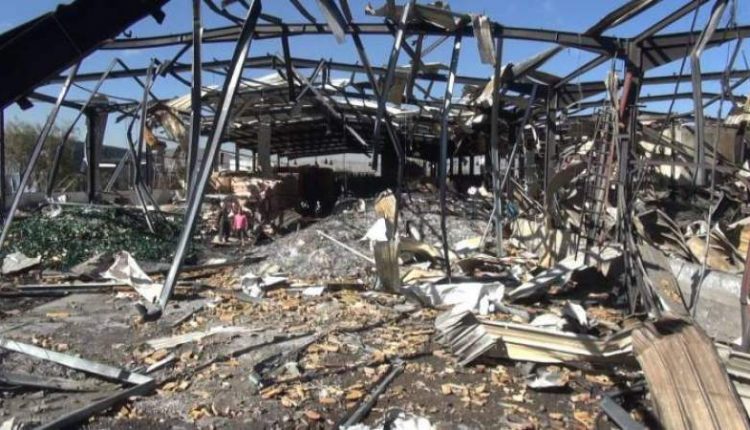Bill for Economic Aggression Against Yemen Exceeds $ 100 billion
From the very beginning of the aggression on Yemen, the coalition leadership attempted to target the Yemeni economy.
The military campaign against Yemen has taken two parallel tracks, the first is military, represented by the direct bombing of the infrastructure of a service and economic nature, such as factories and power plants.
The other track was purely economic, through the transfer of the Central Bank from Sana’a and the attempts to withdraw the currency and replace it with a new currency that was printed without a cover, disrupting vital facilities and major ports, stopping the export of oil and gas, and squandering important wealth of fish and agricultural exports.
The bill for the economic war was very huge, reaching shocking numbers exceeding $ 100 billion in the industrial, agricultural, telecommunications, fishing, transportation and electricity sectors.
Central Bank Transfer
The first step in the economic war was to move the Central Bank of Yemen from Sana’a to Aden and stop foreign banking dealings with the bank. This step hindered commercial activity as a result of not opening bank credits abroad in order to enable merchants to cover the internal market with the necessary needs of commodities and basic supplies.
The transfer of the Central Bank from Sana’a came at a time when it was providing its services to all governorates of the republic without exception, on top of which is the payment of salaries of all state employees and covering the needs of merchants in hard currency without discrimination to provide goods to the local market.
This measure resulted in many negative consequences for the Yemeni economy, especially by the halt in the payment of salaries to employees, the high level of unemployment and the deterioration of the national currency.
Tampering with currency
The economic war included the fabrication of the problem of liquidity crisis, and its gradual withdrawal from the market, so the coalition found a justification for printing a large amount of the local currency, the riyal, which led to a monetary inflation in the Yemen, causing a great deterioration to the Yemeni economy during the last three years.

